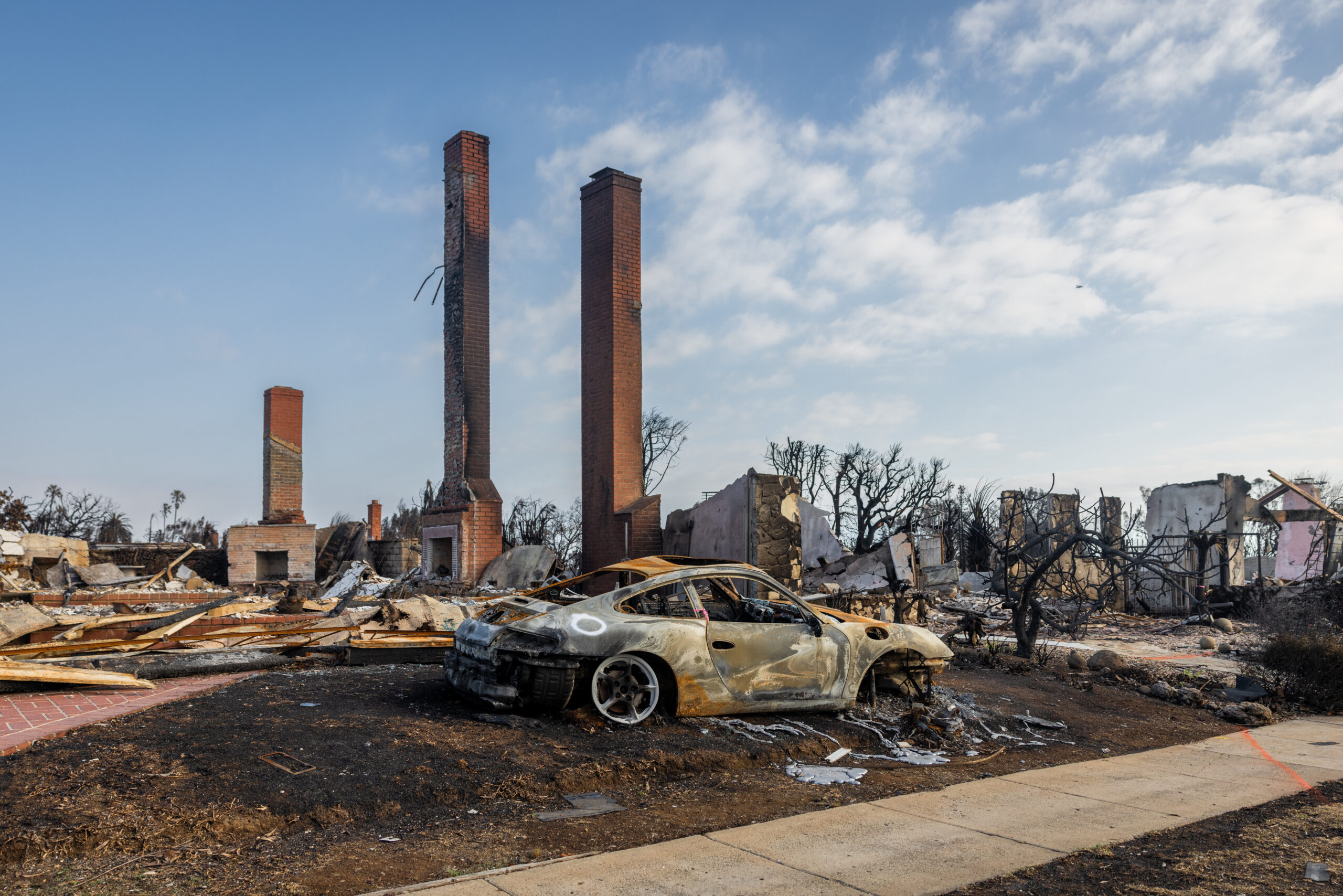Tricia Clarke stood on a Lakeway hilltop, winds threatening to snatch the ball cap from her head, and pointed across miles of rolling, scrub-covered limestone countryside, past the distant blue line of Lake Travis, to a spot nearly 55 miles away.
That’s where one of the region’s main Doppler radars sits at Fort Hood. Another, at the National Weather Service’s New Braunfels office, is 46 miles away in the opposite direction. Radar, Clarke said, accomplishes a lot, but “radar doesn’t pick up everything close to the ground.
“That,” she said, “is where spotters like me come in.”
The Austin American-Statesman reports Clarke is part of an experiment the National Weather Service is trying in Central Texas and a few other places around the country as it adjusts to the age of social media. The age is both a blessing and a curse: Weather authorities have more ways than ever to acquire the “ground truth” that is invaluable in the still-young science of forecasting.
Public safety agencies, too, are experimenting with ways to leverage the potential of crowdsourcing. But sorting all that information can be difficult – particularly in the midst of a disaster like a flood or fire – and misinformation tends to spread faster than officials can correct it.
One of the weather service’s ideas is to rely on small teams of volunteers like Clarke and harness the enthusiasm of her fellow weather geeks. The teams would help the professionals gather reliable information and release it to the public. If the approach works, it may be expanded.
“We’re trying to utilize the interest of people,” said Paul Yura, who directs public outreach for the San Antonio/Austin branch of the weather service. “The more ground-truth reports we can get and the more effectively we can get word out to the public, the better.”
When Clarke was growing up in the Dallas suburb of Garland, one of the main ways of getting word out was the tornado sirens, which she said were “the most terrifying sound imaginable.” Her interest in weather was strong enough that as an adult, co-workers called her “weather girl.” The Doppler channel provided the soundtrack to her mornings.
In the late afternoon of May 27, 1997, a massive storm was bearing down on Austin. Clarke, at the time working for a nonprofit for property tax professionals, was the only person still in the office. When she finally decided to head home, “the sky behind me was just black.”
She raced down U.S. 183 to her Southeast Austin home, where she hid in the bathtub with her cats. A few days later, she and her boyfriend drove through Jarrell, a town of just more than 1,300 residents that had been ripped apart during the storm by a tornado, leaving 27 dead. A whole subdivision was simply gone.
“There was mulch everywhere,” Clarke said. “The trees had just been mulched.”
That tornado, she said, made nature’s power clear to her. It’s the kind of phenomenon she mentions when making a distinction between what she does and what she does not do.
“A storm chaser is someone who goes on a mission to find a tornado,” Clarke said. “A storm spotter could be someone going out in their backyard and looking up. I have no desire to see a tornado. I hope I never see one.”
Public officials discourage the sort of storm chasing that can get an untrained person killed. But they say there are many other ways to help. The city of Austin and the Lower Colorado River Authority have websites that compile data people send from their phone after checking a backyard rain gauge. The curious can check rainfall patterns, but more importantly it allows people to check if floods are imminent and helps public officials prepare responses.
From her favorite hilltop – a short drive from her home, where she lives with her husband and 6-year-old son – Clarke can see cloud formations miles away. To people savvy to storms, clouds have subtle tells about what is coming. The prettier and more latticed the patterns in a thundercloud, the more violent it is likely to be, for example.
“Clouds fascinate me,” Clarke said. “I think they’re so beautiful. They’re pieces of artwork, I think.”
She does not remember how she heard about the 2012 Skywarn conference. Probably through Facebook, she guesses. The annual Austin conference is one of the nation’s largest of its kind, a place where weather enthusiasts earn basic certification in storm spotting – both what to look for and how to stay safe while doing it.
The conference was attended mostly by ham radio operators and public safety employees (current and retired) – the people meteorologists long relied upon for ground truth. Clarke loved it, she said. She set up a Twitter handle – (at)atxwxgirl, of course – and began sending out weather photos and reports.
In August, weather service officials held a meeting with some of the area’s most prolific and credible weather enthusiasts.
By December, three of them had decided to form a team, creating the TravisCountySevereWx Twitter feed.
In January the weather service named them “weather-ready national ambassadors” and designated them the state’s third “virtual operations support team.” They work directly with the weather service.
Under such arrangements, weather enthusiasts get to scratch an itch, while the weather service essentially gets free additional resources, said Michael Lyttle, a team member who said he was “raised in a family of weather nuts” and carried the interest into adulthood.
Lyttle is well-versed in meteorology and on the Twitter feed focuses on the ins and outs of forecasting (and translating it). Steven Williams focuses mainly on radar. And Clarke, by virtue of being a prolific spotter, provides the most updates and does most of the interacting with followers.
She has a Skywarn sticker prominently affixed to her SUV’s front window, and when she’s spotting she wears boots and a Skywarn ball cap over her pigtails. She estimates that during spring and fall, when Central Texas weather is most temperamental, she spends four to six hours a day mostly tweeting and spotting. She can do this, she said, because she has flexible hours as a contractor who designs online training sessions for big companies.
Even so, finding those hours can be difficult, she said. Earlier this year she had a minor meltdown on Twitter. She wondered openly if people were paying attention. Were the results worth the enormous time commitment?
“I have my moments,” she said.
That is partly why Clarke wears a bracelet engraved with “TCSO 4413.” It is in remembrance of Jessica Hollis, a Travis County sheriff’s deputy who was checking a low water crossing in September 2014 when her vehicle was swept away with her inside. Hollis died – and if a storm could kill someone as qualified as a senior deputy, it must present a danger worth trying to limit, Clarke said.
Last week, as she stood atop the Lakeway hill pointing to the Fort Hood radar beneath dark clouds, Clarke admitted she was feeling a little sluggish. She had been posting Twitter updates the night before as a storm approached and later dumped more than 11/2 inches of rain in the area.
Clarke thinks she went to bed around 3 a.m., getting about two hours of sleep.
“My adrenaline was pumping,” she said. “I couldn’t go to sleep anyway.”
Was this article valuable?
Here are more articles you may enjoy.

 Family of Canadian CEO Killed in Helicopter Crash Files $35 Million Lawsuit
Family of Canadian CEO Killed in Helicopter Crash Files $35 Million Lawsuit  Tesla Showroom Strikes, Vandalism Sparked by Fury Against Musk
Tesla Showroom Strikes, Vandalism Sparked by Fury Against Musk  Wall Street Brokers Start Trading Insurer Claims From LA Fires
Wall Street Brokers Start Trading Insurer Claims From LA Fires  Trump’s Tariffs Threaten to Endanger the Cheap American Car
Trump’s Tariffs Threaten to Endanger the Cheap American Car 